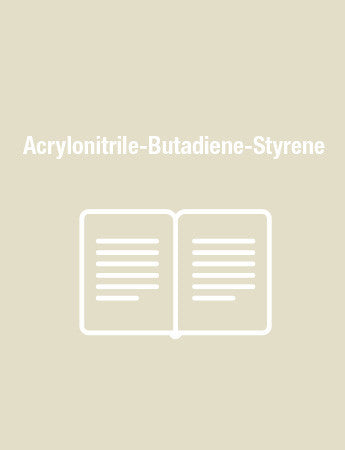Silicone Products for Food Contact Applications
in a variety of different food contact situations and conditions.
The origin of this review report was a Food Standards Agency (FSA) project on food contact silicone based materials that was carried out at Rapra from 2003 until 2005. The objective of this project was to provide detailed information on the types and composition of silicone based products that are used in contact with food and to identify the extent to which the migration of specific constituents into food could occur. In addition to giving a summary of the findings of this extensive FSA project, this review report also provides an extensive overview of the principal types of silicone products that are used in food contact situations, from a description of their manufacture and chemical composition, to a detailed review of the potential migrants and their migration behaviour. It also covers the relevant national and EU food contact legislation and describes recent, food related technological developments.
This report is the final one of a trilogy that has addressed food contact materials. It joins a report summarising the current situation with respect to the use of rubber products for food applications (Review Report No. 182) and one reviewing the use of coatings and inks (Review Report No. 186).
The review is accompanied by around 230 abstracts compiled from the Polymer Library, to facilitate further reading on this subject. A subject index and a company index are included.
The origin of this review report was a Food Standards Agency (FSA) project on food contact silicone based materials that was carried out at Rapra from 2003 until 2005. The objective of this project was to provide detailed information on the types and composition of silicone based products that are used in contact with food and to identify the extent to which the migration of specific constituents into food could occur. In addition to giving a summary of the findings of this extensive FSA project, this review report also provides an extensive overview of the principal types of silicone products that are used in food contact situations, from a description of their manufacture and chemical composition, to a detailed review of the potential migrants and their migration behaviour. It also covers the relevant national and EU food contact legislation and describes recent, food related technological developments.
This report is the final one of a trilogy that has addressed food contact materials. It joins a report summarising the current situation with respect to the use of rubber products for food applications (Review Report No. 182) and one reviewing the use of coatings and inks (Review Report No. 186).
The review is accompanied by around 230 abstracts compiled from the Polymer Library, to facilitate further reading on this subject. A subject index and a company index are included.
1. Introduction
2. Silicone Products for Food Contact Applications
2.1 Silicone Polymers – Chemistry, Structure, and Properties
2.1.1 Definition of a Silicone Polymer
2.1.2 Chemical Bonding in Silicones
2.1.3 Physical Characteristics
2.1.4 Chemical Properties
2.2 Food Contact Silicone Products – Manufacture and Composition
2.2.1 Introduction
2.2.2 Manufacture of Silicone Polymers and Their Precursors
2.2.3 Silicone Fluids and Silicone Gums
2.2.4 Silicone Rubbers – from High MW Gums
2.2.5 Silicone Rubbers – From Relatively Low MW Liquids
2.2.6 Silicone Resins
2.2.7 Silicone Greases
2.2.8 Copolymers
2.2.9 Silicone Surfactants
2.3 Food Contact and Food Related Applications
2.3.1 Release Agents
2.3.2 Silicone Rubbers
2.3.3 Silicones as Additives for Polymers
2.3.4 Silicones in Food Processing
3. Regulations Covering the Use of Silicones With Food
3.1 Existing EU Legislation and Guideline Documents
3.2 Council of Europe Resolution on Silicones (Resolution AP (2004))
3.3 German Recommendation XV from the BfR
3.4 Other National Legislation in the EU
3.4.1 Belgium
3.4.2 Italy
3.4.3 Netherlands
3.4.4 United Kingdom
3.5 The US Food and Drug Administration (FDA)
4. Assessing the Safety of Silicone Materials and Articles for Food Applications
4.1 Fingerprinting of Potential Migrants from Silicone Products
4.1.1 Multi-element Semi-quantitative Inductively Coupled Plasma Scan
4.1.2 Targeting of Specific Species
4.1.3 Identification of Low MW Potential Migrants
4.2 Overall Migration Tests
4.2.1 FDA Regulations for Rubbers
4.2.2 Council of Europe Silicone Resolution
4.3 Determination of Specific Species in Food Simulants and Foods
4.3.1 Determination of Specific Elements
4.3.2 Determination of Formaldehyde
4.3.3 Determination of Low MW Species Using GC-MS and LC-MS
5. Foods Standards Agency Silicone Project – Contract Number A03046
5.1 Silicone Products Studied in the Project
5.1.1 Silicone Rubbers
5.1.2 Silicone Fluids
5.1.3 Silicone Resins – Uncured Products
5.1.4 Silicon Resin Coated Bakeware from Supermarkets
5.1.5 Compositional Fingerprinting Work
5.2 Migration Experiments with Food Simulants
5.2.1 Overall Migration Work
5.2.2 Specific Migration Work
5.3 Migration Experiments with Food Products
5.3.1 Contact Tests Performed on the Silicone Products
5.3.2 Determination of Specific Migrants in Food Products
5.4 Summary of Project Results
5.4.1 Summary of the Data Obtained on the Silicone Rubber Samples
5.4.2 Summary of the Data Obtained on the Silicone Fluids
5.4.3 Summary of the Data Obtained on the Silicone Resin Samples
5.4.4 Overall Summary of the Project and the Results Obtained
6. Migration Mechanisms, Potential Migrants, and Published Migration Data
6.1 Possible Migration Mechanisms for Chemical Species from Silicone Products
6.1.1 Migration to Air (Volatilisation)
6.1.2 Migration into Fluids
6.1.3 Migration into Foodstuffs
6.2 Potential Migrants from Silicone Products
6.2.1 Summary of Potential Migrants
6.2.2 Specific Potential Migrants
6.3 Published Migration Data
6.3.1 Silicone Rubber Study
6.3.2 Silicone Rubber Teats and Soothers
6.3.3 Peroxide Breakdown Products
6.3.4 Polydimethylsiloxane Oligomers
6.3.5 General Assessment of Silicone Rubbers
7. Improving the Safety of Silicones for Food Use and Future Trends
7.1 Silicone Foams
7.2 Antibacterial Additives and Coatings
7.3 Intelligent Packaging
7.4 Barrier Coatings
7.5 Non-stick Additives
7.6 Nanoparticulate Silicones
7.7 Inks and Varnishes
7.8 Radiation-cured Release Coatings
8. Conclusion
References
Acknowledgements
Abbreviations and Acronyms
Structural Assignments for Silicone Polymers and Oligomers
References from the Polymer Library Database
Subject Index
Company Index
2. Silicone Products for Food Contact Applications
2.1 Silicone Polymers – Chemistry, Structure, and Properties
2.1.1 Definition of a Silicone Polymer
2.1.2 Chemical Bonding in Silicones
2.1.3 Physical Characteristics
2.1.4 Chemical Properties
2.2 Food Contact Silicone Products – Manufacture and Composition
2.2.1 Introduction
2.2.2 Manufacture of Silicone Polymers and Their Precursors
2.2.3 Silicone Fluids and Silicone Gums
2.2.4 Silicone Rubbers – from High MW Gums
2.2.5 Silicone Rubbers – From Relatively Low MW Liquids
2.2.6 Silicone Resins
2.2.7 Silicone Greases
2.2.8 Copolymers
2.2.9 Silicone Surfactants
2.3 Food Contact and Food Related Applications
2.3.1 Release Agents
2.3.2 Silicone Rubbers
2.3.3 Silicones as Additives for Polymers
2.3.4 Silicones in Food Processing
3. Regulations Covering the Use of Silicones With Food
3.1 Existing EU Legislation and Guideline Documents
3.2 Council of Europe Resolution on Silicones (Resolution AP (2004))
3.3 German Recommendation XV from the BfR
3.4 Other National Legislation in the EU
3.4.1 Belgium
3.4.2 Italy
3.4.3 Netherlands
3.4.4 United Kingdom
3.5 The US Food and Drug Administration (FDA)
4. Assessing the Safety of Silicone Materials and Articles for Food Applications
4.1 Fingerprinting of Potential Migrants from Silicone Products
4.1.1 Multi-element Semi-quantitative Inductively Coupled Plasma Scan
4.1.2 Targeting of Specific Species
4.1.3 Identification of Low MW Potential Migrants
4.2 Overall Migration Tests
4.2.1 FDA Regulations for Rubbers
4.2.2 Council of Europe Silicone Resolution
4.3 Determination of Specific Species in Food Simulants and Foods
4.3.1 Determination of Specific Elements
4.3.2 Determination of Formaldehyde
4.3.3 Determination of Low MW Species Using GC-MS and LC-MS
5. Foods Standards Agency Silicone Project – Contract Number A03046
5.1 Silicone Products Studied in the Project
5.1.1 Silicone Rubbers
5.1.2 Silicone Fluids
5.1.3 Silicone Resins – Uncured Products
5.1.4 Silicon Resin Coated Bakeware from Supermarkets
5.1.5 Compositional Fingerprinting Work
5.2 Migration Experiments with Food Simulants
5.2.1 Overall Migration Work
5.2.2 Specific Migration Work
5.3 Migration Experiments with Food Products
5.3.1 Contact Tests Performed on the Silicone Products
5.3.2 Determination of Specific Migrants in Food Products
5.4 Summary of Project Results
5.4.1 Summary of the Data Obtained on the Silicone Rubber Samples
5.4.2 Summary of the Data Obtained on the Silicone Fluids
5.4.3 Summary of the Data Obtained on the Silicone Resin Samples
5.4.4 Overall Summary of the Project and the Results Obtained
6. Migration Mechanisms, Potential Migrants, and Published Migration Data
6.1 Possible Migration Mechanisms for Chemical Species from Silicone Products
6.1.1 Migration to Air (Volatilisation)
6.1.2 Migration into Fluids
6.1.3 Migration into Foodstuffs
6.2 Potential Migrants from Silicone Products
6.2.1 Summary of Potential Migrants
6.2.2 Specific Potential Migrants
6.3 Published Migration Data
6.3.1 Silicone Rubber Study
6.3.2 Silicone Rubber Teats and Soothers
6.3.3 Peroxide Breakdown Products
6.3.4 Polydimethylsiloxane Oligomers
6.3.5 General Assessment of Silicone Rubbers
7. Improving the Safety of Silicones for Food Use and Future Trends
7.1 Silicone Foams
7.2 Antibacterial Additives and Coatings
7.3 Intelligent Packaging
7.4 Barrier Coatings
7.5 Non-stick Additives
7.6 Nanoparticulate Silicones
7.7 Inks and Varnishes
7.8 Radiation-cured Release Coatings
8. Conclusion
References
Acknowledgements
Abbreviations and Acronyms
Structural Assignments for Silicone Polymers and Oligomers
References from the Polymer Library Database
Subject Index
Company Index
Dr. Martin Forrest started his career in 1977 with James Walkers & Co. Ltd, and during this time he progressed to the position of Rubber Technologist, having obtained his first degree in Polymer Technology at the London School of Polymer Technology (LSPT). In 1983 he started a full time Master of Science course in Polymer Science and Technology at the LSPT. After being awarded his MSc in 1984, he completed a Ph.D. in Polymer Chemistry at Loughborough University in 1988. He then joined Rapra Technology as a Consultant in the Polymer Analysis section and remained in that section until 2006, rising to the position of Principal Consultant. During his time in the Polymer Analysis section, Dr. Forrest was the main contact at Rapra for consultancy projects involving the analysis of rubber compounds and rubber based products. During his 20 years at Rapra he has also managed a number of FSA, TSB, and EU funded research projects, and since 2006 he has been a Project Manager for the Research Projects Group.




